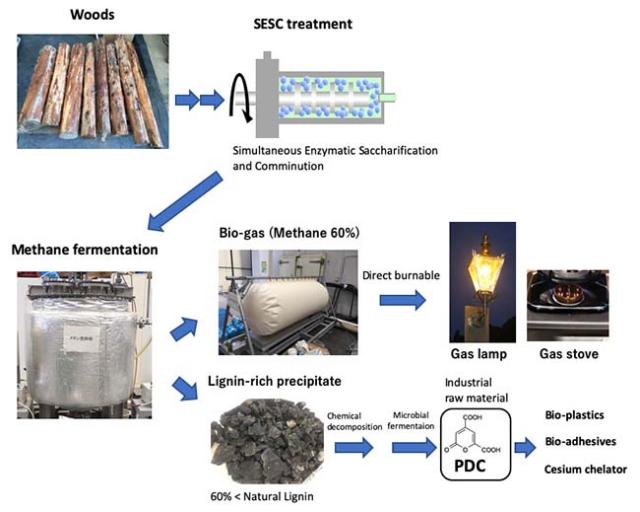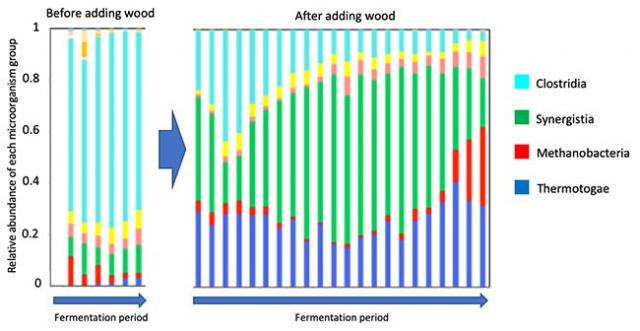Home > Research > Research Results > Research Results 2020 > Production of fuel gas and industrial raw materials from wood by microbial energy
Update:February 18, 2020
Main content starts here.
Production of fuel gas and industrial raw materials from wood by microbial energy
| Article title |
Combined simultaneous enzymatic saccharification and comminution (SESC) and anaerobic digestion for sustainable biomethane generation from wood lignocellulose and the biochemical characterization of residual sludge solid |
|---|---|
| Author (affiliation) |
Ronald R. Navarro (a), Yuichiro Otsuka (a), Kenji Matsuo (b), Kei Sasaki (c), Ken Sasaki (c), Tomoyuki Hori (d), Hiroshi Habe (d), Masaya Nakamura (a), Yutaka Nakashimada (b), Kazuhide Kimbara (e), Junichi Kato (b) (a) Department of Forest Resource Chemistry, FFPRI, Tsukuba, Ibaraki, Japan. (b) Hiroshima University, Higashi-Hiroshima, Hiroshima, Japan. (c) Hiroshima Kokusai Gakuin University, Hiroshima, Japan. (d) National Institute of Advanced Industrial Science and Technology (AIST), Tsukuba, Ibaraki, Japan. (e) Shizuoka University, Hamamatsu, Shizuoka, Japan. |
| Publication Journal |
Bioresource Technology, 300, 122622, March 2020 DOI:10.1016/j.biortech.2019.122622( External link ) |
| Content introduction |
Methane fermentation is a simple process that requires inexpensive equipment and is associated with low environmental impact. The most common raw materials for methane fermentation are livestock manure and food residues. However, it is difficult to secure a stable supply of these raw materials and there is a lack of large-scale methane fermentation facilities. However, if methane fermentation can be performed using wood as the main raw material, it will be easy to secure raw materials domestically. Japan is rich in forests, and the availability of wood can increase the scale of fermentation facilities. Therefore, we established a methane fermentation demonstration facility in Minamisoma, Fukushima. We determined the conditions needed for the stable operation of methane fermentation facilities using wood as the main raw material at a demonstrative scale (500 L) for the first time in the world (Figure 1). We found that microbial composition during methane gas production with livestock manure as the main raw material was remarkably different from that with wood as the main raw material (Figure 2). Residues from methane fermentation using wood as the main raw material contained a large amount of lignin, the main polyphenol component of wood. However, its alteration was low and it easily decomposed into aromatic substances. These aromatic substances can also be used as industrial raw materials through microbial fermentation, leading to higher value-added use of the fermentation residue.
Figure 1. Methane fermentation using wood as the main raw material produces directly flammable methane fuel gas and industrially usable fermentation residues.
Figure 2. Remarkable changes in the composition of microbial communities following methane fermentation using wood as the main raw material. |
Copyright © Forest Research and Management Organization. All rights reserved.


